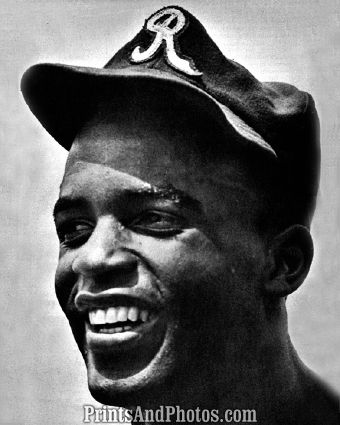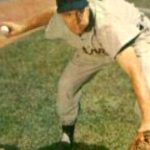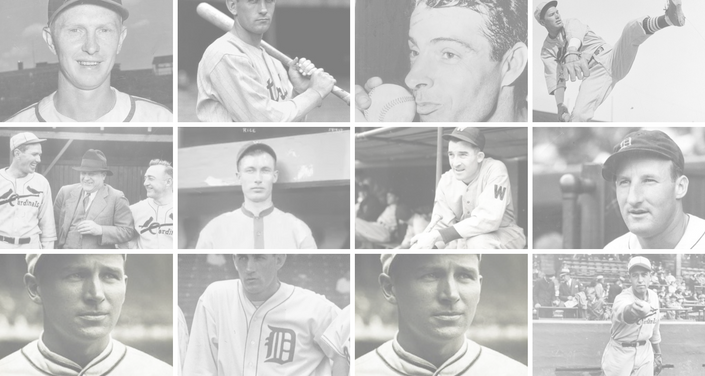John Alexander McPhee was born on November 1, 1859 in Massena, New York. His father, John, was a Scotchman who earned his living as a saddlemaker. The boy was soon given the nickname “Bid.”
When he was seven, the family moved to Aledo, Illinois, and then to nearby Keithsburg, a small town on the banks of the Mississippi River. In Keithsburg, Bid began helping out in the kitchen of a hotel run by his uncle.
As a teenager, he befriended a boy named Parke Wilson, whose father operated the local dry goods store. Bid got a job working in the store, and played baseball with Parke, who was eight years younger. The two would ultimately face each other in the National League for seven seasons, after Parke became a catcher for the New York Giants.
Bid was also a catcher in those early years, a sure-handed receiver with fine speed on the basepaths. By the age of 16, he’d established himself as one of the best players in the Keithsburg area.
His ability soon caught the eye of the professionals, and in the summer of 1878, he was catching for the Davenport Brown Stockings, an Iowa club in the Northwestern League. In 39 games that season, the 18-year-old hit .333.
The following year, the Davenport captain asked Bid to play at second base on occasion, as well as in the outfield. He saw action in only 20 games, however, and his average dropped to .229.
In 1880, he took a steady, well-paid job as a clerk in a dry goods store in Denver. Though he participated in recreational baseball, he did not play professionally that year.
The owner of the minor-league team in Akron, Ohio, who remembered Bid’s play with Davenport, signed him for the 1881 season by promising him the second-base job and a position as bookkeeper with an Akron lumber company.
Bid, now 21, played well as Akron’s second baseman that year. After the season ended, he was contacted by a scout for the Cincinnati franchise of the American Association, a newly-formed league that planned to begin play in 1882, and hoped to compete with the National League.
Cincinnati had been the home of a National League team as recently as 1880. But by playing games on Sundays and selling beer at its ballpark, the club roused the antagonism of league president William Hulburt, an ardent prohibitionist who was trying to clean up the game. Cincinnati was well-known for its beer-brewing, and had a large German population that enjoyed drinking beer. When the team’s officials refused to change their beer-and-Sunday ball policy, Hulburt, with the support of the other league owners, expelled the club from the National League.
Cincinnati then became a driving force in the formation of the American Association, which would also include teams in Philadelphia, St. Louis, Baltimore, Pittsburgh, and Louisville. The new circuit would compete for fans with the National League by offering a lower admission price of twenty-five cents, Sunday games, and the sale of liquor on the grounds. It became known as “The Beer and Whiskey League.”
Bid signed with the Cincinnati Red Stockings, and made his major-league debut on the season’s opening day of May 2, 1882. Though his club lost to Pittsburgh, 10-9, the “Cincinnati Enquirer” the next day mentioned him as one of five Red Stockings who had played well in the field.
The American Association had begun its inaugural season with a rule requiring players to wear jerseys in colors specific to each position. Pitchers on every team were to wear sky-blue jerseys, while catchers wore deep red, first basemen had bright-red and white, and shortstops wore burgundy. As a second baseman, Bid took the field in a jersey with a pattern of two-inch wide orange-and-black stripes. The players referred to the uniforms as “clown suits”, until the experiment was ended.
When Bid broke in, pitchers had to throw underhand, at a distance of 45 feet from the plate, and seven balls were required for a batter to be awarded first base. He hit just .228 in 1882, the lowest average of any Cincinnati regular. But the Red Stockings won the American Association pennant, finishing 11 and one-half games ahead of the second-place Philadelphia Athletics, and Bid led the league in fielding percentage, double plays, and putouts.
That fall, Cincinnati agreed to play a two-game series against the Chicago White Stockings, champions of the National League. The games were played at the Bank Street Grounds, Cincinnati’s home park.
The Chicago club, led by future Hall of Famer Cap Anson, was clearly the best team in baseball, while the American Association was often viewed as an inferior league. Anson felt confident enough to leave King Kelly, his star shortstop, at home to rest up for the White Stockings’ forthcoming series against the National League’s second-place Providence Grays.
The first game was played on October 6, with 2,700 fans in attendance. Teams commonly used only two starting pitchers, and Anson sent his second-best man to the mound. Cincinnati countered with Will White, the only 19th century player to wear glasses on the field, and the most intimidating pitcher in baseball. Hit batsmen were not given first base at the time, and with seven balls required for a walk, White often drilled hitters with pitches several times in one at-bat, to keep them from crowding the plate.
White pitched an outstanding game, shutting Chicago out. Bid drove in two runs with a triple, then scored on a wild pitch as Cincinnati won, 4-0. The following day, the “Cincinnati Enquirer” compared the Red Stockings’ victory to the Spartans’ defeat of Persia at Thermopylae.
Though White started the series’ second game for Cincinnati, the White Stockings prevailed, 2-0. Overall, though, it had been a good first season for the American Association, and a split of the two games with the mighty Chicago club was a promising result.
In the next few years, Bid began to establish himself as the best second baseman in all of baseball. Like many players in his era, he played bare-handed in the field. He was graceful at second, and his speed gave him excellent range. He had quick, agile hands, and handled ground balls cleanly. He was particularly skilled at catching pop-ups. Infielders at the time rarely pursued pop flies hit behind them, to avoid collisions with outfielders, who played much shallower than they do today. Bid was one of the first to go after any ball within reach, and his outstanding career totals for chances and putouts testify to his ability.
Bid also had a strong, accurate arm that enabled him to play deep at second base. A smart player, with quick anticipation, he was adept at thwarting a double-steal by cutting in front of second base, catching the ball in his throwing hand and firing it to the catcher to nail the runner from third.
Off the field, Bid’s teammates discovered he was the most well-mannered, articulate man among them. He was also a rarity among ballplayers of his time in that he didn’t drink.
In his first few years with Cincinnati, Bid’s hitting improved rapidly. In 1884, his third season in the major leagues, he hit .278, a full fifty points higher than his average as a rookie.
In that same 1884 season, Cincinnati shortened the team’s name to the Reds, and baseball began to institute a number of important rule changes. For the first time, a batter hit by a pitch would be given first base, and National League pitchers were allowed to throw overhand. The American Association permitted overhand pitching in 1885, and in1886 it reduced the number of balls for a walk to six. That year, the league also abolished a rule requiring pitchers to throw the ball with both feet on the ground. Hurlers who liked to take a running start before throwing, or used a whirling, unorthodox delivery, were given greater freedom to do so.
Despite these changes, Bid’s hitting continued to flourish. In 1886, he led the league with eight home runs, and exceeded his best season’s totals with 23 doubles, 12 triples, 70 RBIs, and an average of .268. His power hitting was particularly impressive, given that he stood 5’8”, and weighed only 152 pounds. His sharp eye at the plate, an attribute he maintained throughout his career, allowed him to draw 59 walks, and he stole 40 bases. He became the Reds’ lead-off hitter that season, and thrived in the position, scoring 139 runs, the second-highest total in the league.
Prior to the 1886 campaign, the National League and American Association club owners had drawn up a plan called the Limit Agreement, by which they pledged not to pay any player more than $2,000 per season. The owners soon began to break their own rule, however, exceeding the limit to keep their best players happy. Bid signed in February, 1887 to play for $2,000 that year. But attached to the official contract was a document written in longhand on the team’s stationery, which stated that the Reds would pay him an additional $300, bringing his total salary for the season to $2,300. A small number of the best players, including King Kelly, collected more than twice their salary in under-the -table payments from their clubs.
To foster more hitting, the National League and the American Association adopted a rule before the 1887 season opened, requiring pitchers to keep their back foot on a line 55′ 6” from the plate. They could also take only one step before releasing the ball, thus eliminating the running start that many of the toughest pitchers used. The number of balls for a walk was reduced to five, and the hitters were now given four strikes. To assist the running game, another rule limited the ways pitchers could deceive men on base.
Bid continued to play one outstanding season after another, excelling as the Reds’ lead-off hitter with fine totals for stolen bases, walks, and runs scored. He also regularly led the league in the defensive categories of double plays, fielding percentage, putouts, assists, and total chances.
He became known throughout baseball as “King Bid”, and his wizardry in the field was all the more admirable because he continued to play bare-handed. Players generally wore gloves by 1890, but his view didn’t change. He told a “Cincinnati Enquirer” reporter that year that he thought the use of gloves had gone a bit too far, claiming he had “never seen the necessity of wearing one”, and could not “hold a thrown ball if there is anything on my hands.” He toughened his hands by soaking them in salt water. “True, hot-hit balls do sting a little at the opening of the season,” he said, “but after you get used to it, there is no trouble on that score.”
Prior to the 1890 season, the Reds and the Brooklyn Bridegrooms moved from the American Association to the National League. Sadly for the Reds, who had not won a league pennant since Bid’s rookie year in 1882, their misfortunes would continue.
In 1892, Cincinnati had a poor pitching staff, and the club was well out of the race in the season’s final week. Before the last game, a stranger named Bumpus Jones walked into the Reds’ clubhouse and announced that he could pitch better than anyone in baseball. Amused by Jones’ claim, player-manager Charles Comiskey gave him a uniform and let him take the mound. Jones proceeded to throw a no-hitter against the Pittsburgh Pirates that day. He was invited to try out for the Reds the following spring, and made the club. But he was unable to summon his prowess of the previous year, and the Reds released him after five starts.
During spring training in 1896, an injured finger on Bid’s left hand was slow to heal, so he began wearing a thinly-padded glove. He’d played bare-handed for 14 years in the big leagues, and was the last player in baseball to use a glove. He wore it throughout the 1896 season, and for the rest of his career. His fielding percentage of .982 that year set a major-league record that stood until 1925, by which time baseball equipment and field conditions had been enormously improved. Bid’s achievement was remarkable, and greater still when one remembers he was 36 that season.
His hitting ability, too, remained sharp late in his career. In 1894, when he was 34, he attained his highest batting average of .313. He went on to hit .305 in 1896, and .301 in 1897.
Bid suffered an ankle injury during the 1897 season, and was sidelined for over two months. When the Cincinnati fans heard he might retire, they took up a collection for him. On August 14, 1897, they held Bid McPhee Day at the Reds’ ballpark, and presented him with a check for $1,800.
In his final season, 1899, he played in 112 games for the Reds at the age of 39, and hit a respectable .279, the fourth-best average among the team’s regulars. He retired in March, 1900, while in spring training with the club in New Orleans. In an open letter to the Reds’ fans, he said he was leaving because “. . . my presence on the team would only handicap its chances.” The club, he said, had given him permission to stay as long as he wanted, a fitting tribute to a man who was most proud of the fact that he had never been fined or ejected from a game.
During 18 seasons and 2,172 games in the major leagues, Bid compiled a career average of .281, with 1,674 runs, 2,342 hits, 1,072 RBIs, and 542 stolen bases. He led the league in double plays 11 times; in fielding percentage nine times; in putouts eight times; and in assists and total chances six times. He still holds the career and single-season records for putouts by a second baseman.
He stayed in Cincinnati after retiring, and in 1901 he agreed to manage the Reds. The club had a difficult season, and in 1902, amid more inconsistent play and some chicanery involving the Reds’ owner, Bid resigned on July 11.
For several years, he tended to his various business affairs in Cincinnati, and worked as a talent scout for the Reds. In 1909, he moved to the town of Ocean Beach in Southern California, where he remained in quiet retirement until his death in 1943.
In 2000, he was elected to the Hall of Fame by the Veterans Committee, along with Sparky Anderson and Negro Leagues player Norman “Turkey” Stearnes. Bid and Johnny Bench are the Hall’s only two members to have played their entire careers in Cincinnati. Honoring Bid, one of baseball’s unfailing gentlemen, his Hall of Fame plaque commemorates a man “known for his sober disposition and exemplary sportsmanship.”






